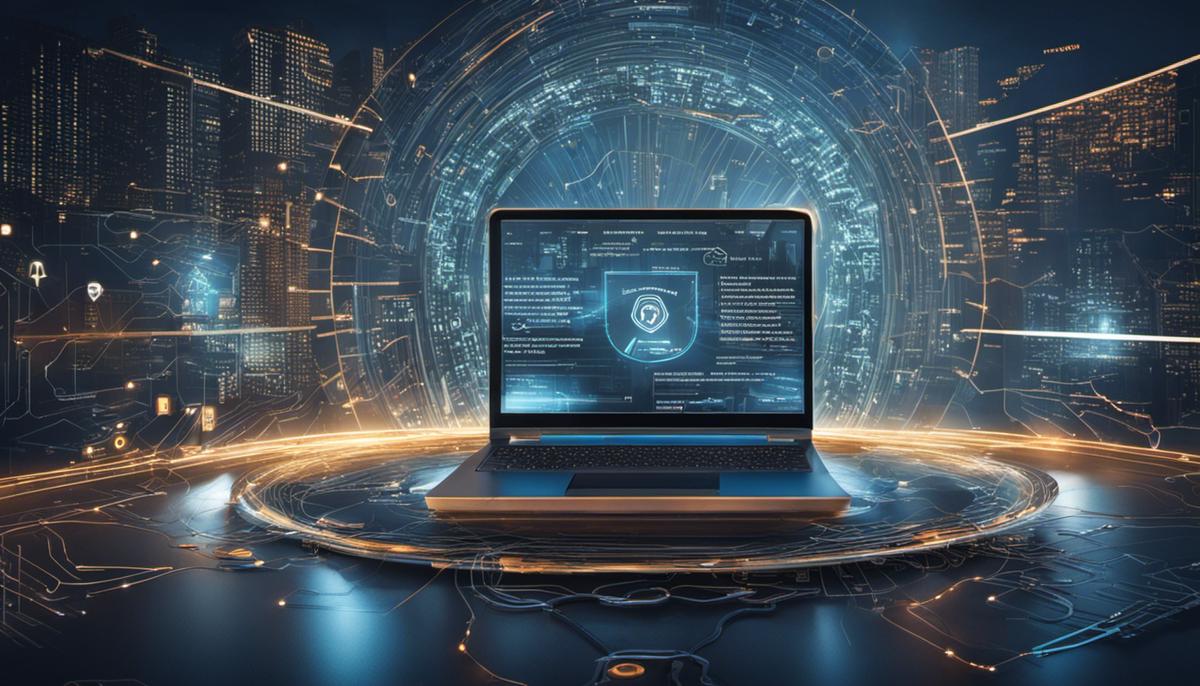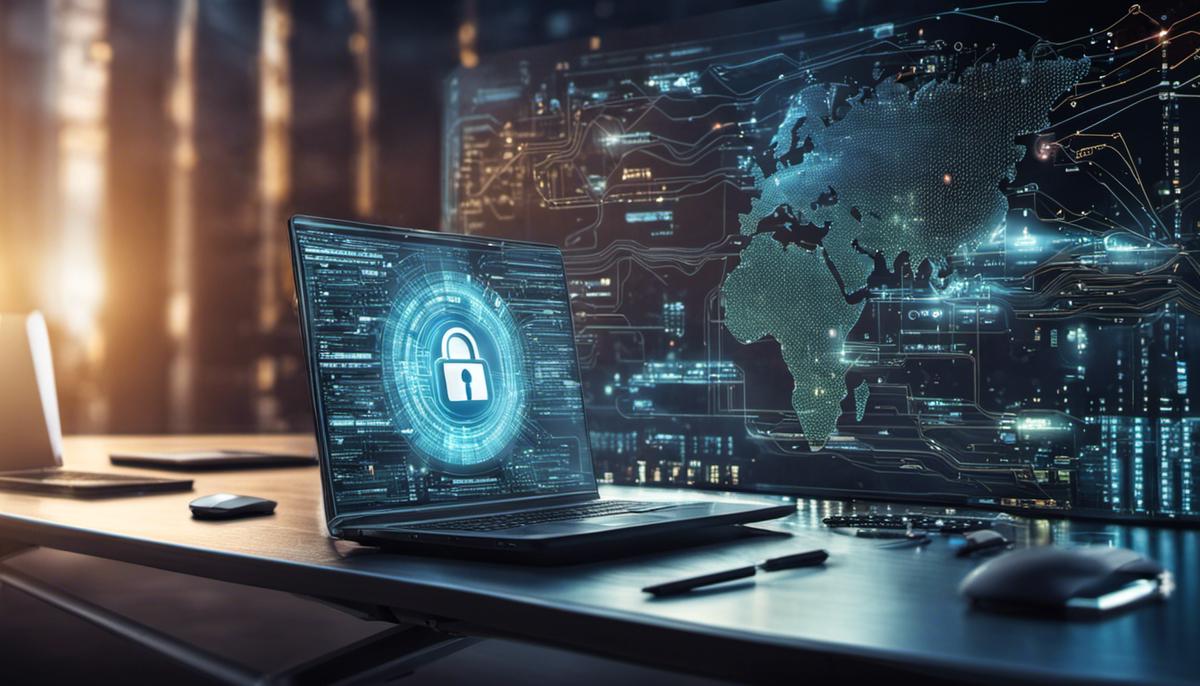In an era defined by the advancement of technology, cybersecurity has emerged as a field not only of importance but of utmost necessity. As we immerse ourselves more and more into the digital realm, cyber threats evolve in tandem, threatening the security of businesses, governments, and individuals alike. In this discourse, we’ll delve into the evolution of such cyber threats, scrutinize the latest technological innovations in cybersecurity, explore the significant role of human factors in maintaining cyber resilience, and project into an exciting yet uncertain future of cybersecurity marked by rapid advancements and sophisticated threats. Firmly rooted in this conversation is the understanding of our ever-growing need to adapt, evolve and stay informed in order to effectively counter these pervasive threats that lurk in the shadows of our digital world.
The Evolution of Cyber Threats
The Evolution of Cyber Threats: Impact on Contemporary Cybersecurity Strategies
In the rapidly evolving digital landscape, cyber threats have undergone massive transformations. This directly influences the strategies and frameworks of cybersecurity. It’s hardly a groundbreaking revelation that this continuous evolution of cyber threats necessitates a more proactive, dynamic, and progressive approach towards cybersecurity.
In the early days, cyber threats were primarily focused on simple scams and viruses, causing relatively minor disruptions. The goals were simple: a little mischief making or financial gain. Fast forward to today, the main lines of attack have diversified into a multitude of malicious intent, from identity theft, ransomware attacks, to large-scale breaches of business and national security infrastructures.
As technology advances, and the world becomes more interconnected, cyber threats evolve in intricacy, potency, and impact. Gone are the days where basic viruses were the main problem. Today, cyber threats encompass a broader range of attacks, including Advanced Persistent Threats (APTs), which infiltrate a network undetected, stealing or corrupting data over time. Simultaneously, the application of AI in these attacks, known as AI-Powered Threats, has upped the ante. They leverage machine learning to analyse patterns and swiftly bypass security protocols.
This transformation in the nature of cyber threats leads to unprecedented challenges for security initiatives. Digital espionage is no longer a concept restricted to spy novels. It’s now a daily reality for large corporations and governments worldwide, signifying the gravity of cyberspace’s dark side.
In light of this evolving threat landscape, current cybersecurity strategies equally need to evolve. Investments are soaring in AI-driven cybersecurity solutions that deliver real-time threat intelligence. Yet, the crucial aspect of the transformation in cybersecurity strategies is a shift towards a holistic and proactive approach. The strategies should no longer be about just playing defence, but also about staying on the offensive.
One such approach is the Zero Trust model. Founder on the principle of ‘never trust, always verify,’ it operates by assuming all traffic, whether internal or external, is a potential threat until proven otherwise. Meanwhile, the heavy application of predictive analytics enables the detection of potential threats before they strike.
The emphasis is now more on data protection than access control, as data is becoming the new flashpoint in cyber warfare. Protection of data at all points – in transit, at rest, and in use – is becoming paramount to avoid scrutinous eyes and ensure integrity and confidentiality.
Also, the growing use of encrypted traffic for advanced threats indicates that encryption alone is not adequate for data protection. Real-time decryption and inspection, therefore, becomes an essential facet of contemporary cybersecurity strategies.
Undeniably, cyber threats and cybersecurity strategies are engaged in a dynamic dance that necessitates constant agility, innovation, and vigilance. This healthy tension drives both fields forward, highlighting the imperative need for a comprehensive understanding and swift reaction to this evolving digital landscape. How this technology chess game will play out remains to see, but one thing is unequivocally clear – cybersecurity isn’t a choice anymore, it’s a necessity.

Innovations in Cybersecurity Technology
Pioneering Techniques and Technologies Tackling Contemporary Cybersecurity Challenges
As the run-of-the-mill hurdles on the cybersecurity front dismantled, the emergence of cutting-edge technology has simultaneously fueled the growth of unmitigated, complex cybersecurity threats. Fortunately, tech mavens aren’t just observing but are at the frontlines, innovating tools and tactics to address this continuously evolving landscape.
Introducing Extended Detection & Response (XDR), a burgeoning tool edifying the cybersecurity realm. Unlike its predecessors (Endpoint Detection and Response), XDR expounds on the concept by unifying all security tools into a cohesive unit. It amalgamates various detection capabilities and response actions across endpoints, networks, and servers, and cloud workloads too, offering a panoramic view of threat activity.
Then we have Security Orchestration, Automation, and Response (SOAR), a solution specifically designed for automation aficionados. Automating routine workflows and accelerating threat qualification, SOAR has become a game-changer. By fusing threat intelligence from multiple sources, SOAR fortifies protection against potential threats and increases efficiency, all while reducing human error.
Furthermore, the advances in Artificial Intelligence (AI) and Machine Learning (ML) platforms are shaping the battlefield against cyber warfare. AI and ML can adapt, learn, and forewarn about potential threats based on past behavior, exponentially enhancing the predictive capability. Efficiently classifying threats, identifying new indicators of compromise, and reducing noisy false positives are among the few prowess of these technologies.
But it’s not just AI and ML receiving all the limelight, Cloud-native Application Protection Platforms (CAPPs) are emerging as a fan-favorite, especially amidst the ongoing cloud transition. Offering precise controls and comprehensive visibility, CAPPs reinforce defense strategies by consolidating security tools and integrating them seamlessly into cloud-native applications.
Privacy-Enhancing Computation technologies also take center stage in emerging responses to cyber threats. By enabling data analysis and collaboration without exposing the raw data, these technologies resolve the paradox of sharing data for business needs and maintaining privacy. Differential privacy, homomorphic encryption, and federated learning stand tall under this umbrella, revolutionizing secure computation and data analysis.
Cybersecurity Mesh — a flexible, architectural approach where security perimeter is defined by the identity of a person or thing — is increasingly recognized for its robust defense capability. It supports the remote workforce by allowing anyone to securely access digital assets from anywhere, pivotal in this era of dispersed workforces.
It’s clear: As cyber threats diversify, so do the paradigms of protection. Engineer “Defense in Depth” into architecture, persistently upgrade skills and tools, and perceive all traffic as a potential threat – this is the new era of cybersecurity. Simply put: Get ahead or get compromised. It’s survival of the tech-savviest.

The Human Factor in Cybersecurity
…Now, let’s shift gears and chronicle the human element of cybersecurity. Granted, security systems and software are vital components. But equally crucial is a well-educated and trained workforce. Technology can fail, be bypassed, or misused, and operational mistakes happen – hence, the assertion that humans can often be the weakest link in cybersecurity.
Curbing this problem requires education, policy, and culture shifts. Employee training is, in many cases, a business’s first line of defense. Organizations are investing in cybersecurity awareness programs, teaching team members to identify and rectify security risks. Content covered can range from recognizing phishing emails to proper data handling procedures. The idea here is to embed a security-conscious mentality at all levels of the organization.
Deeper than education, however, is the concept of a cybersecurity culture. Going beyond periodic training sessions, a cybersecurity culture ingrains the importance of protecting information into everyday business operations. This goes hand in hand with implementing transparent internal security policies that provide clear guidelines on the acceptable use of business systems and how to respond to incidents.
As threats become more complex, the need for adaptive and comprehensive training also escalates. More organizations are opting for gamified cybersecurity training, a more engaging method that encourages active participation through game dynamics. This involves creating realistic cyber threat scenarios and testing employees’ reactions, an approach that can enhance recall and response time during actual attacks.
Another human-related challenge in cybersecurity is the talent gap. There’s a growing need for skilled cybersecurity personnel as cyber threats become more intricate. Universities and vocational schools are beginning to address this demand by providing cybersecurity-related curriculums. At the same time, businesses are investing in continued education and training for their current employees to fill this gap in-house.
Furthermore, wide adoption of new tech trends to manage the human element better is also palpable. Use of behavioral analytics and AI can detect anomalies in users’ behavior, allowing IT personnel to effectively manage insider threats. On the other hand, Passwordless Authentication can eliminate the risk posed by weak or stolen passwords.
To wrap things up, while the human factor can be the weakest link, there’s plenty being done to manage and educate our way to better protection. As technology keeps advancing, so should the individuals who interact with it daily. In essence, cybersecurity is not a one-off task but a continuous process that evolves with the threat landscape. In this way, humans may become the strongest defense, not the weakest link.
Remember, the technology we trust to protect us is only as reliable as the people behind the screens.

The Future of Cybersecurity
Looking ahead, it’s evident that trends such as the Internet of Things (IoT) and edge computing will continue to diversify the technology landscape and, as a result, bring new challenges to cybersecurity. Many experts anticipate that these technologies, if not properly safeguarded, can present vulnerable access points for malicious intruders. Therefore, proactive implementation of IoT and edge-specific security measures will be pivotal in future cybersecurity strategies.
Another game-changing factor will be quantum computing. At unimaginable speeds, quantum computers can break down encryption that traditional computers deem secure. Therefore, the advent of quantum-computing brings into focus the pressing need for quantum-resistant algorithms.
Moreover, legislation and compliance will heavily influence cybersecurity’s future. As data breaches continue to make headlines and privacy continues to be at the forefront of users’ concerns, governments are responding with more stringent data protection regulations. Ongoing compliance with these evolving laws will be obligatory for businesses to avoid hefty fines and reputational damage.
Cybersecurity insurance is another area expected to expand drastically. As the cost of cyber attacks continues to ramp up, more companies are viewing cyber insurance policies as a requisite buffer against potential financial devastation.
Finally, cybersecurity will increasingly turn to AI and ML for threat hunting. Instead of merely responding to breaches once they’ve occurred, these technologies will arm businesses with predictive capabilities, allowing them to proactively identify and mitigate potential threats. Moreover, AI/ML could be used to simulate cyber-attacks for testing and improving resilience of systems, an anticipatory strategy known as ‘red teaming’.
But what does this mean for businesses and individuals alike? Firstly, it underscores the importance of staying informed about emerging cyber threats and the corresponding protective measures. Both businesses and private users will need to ask “Is the technology I’m implementing secure, or does it potentially expose me to cyber threats?”
Secondly, businesses must strive to formulate solid contingency plans. A robust disaster recovery plan that creates multiple backup copies of data and systems should be a priority for any company operating in the digital era. Moreover, endeavors should be made to tighten security at the individual level. Businesses should foster a strong cybersecurity culture where everyday users are educated to identify potential threats and to follow best practices online.
Lastly, individuals need to adopt sound cybersecurity strategies, including multi-factor authentication, secure networks, regular software updates, and the usage of trusted security software. Awareness needs to extend to voice-activated smart devices and wearables, ensuring they’re not open conduits for snoopers.
In this ever-evolving landscape of cyber threats, complacency isn’t an option. The journey of cybersecurity is continuous and it is one we all—businesses, employees, individuals—must navigate with unwavering vigilance. The future is now and it is paramount that we all stay one step ahead in this digital chase.

As we chin up to the future, it’s critical to acknowledge not only the threats that loom over our digital society but the technological progress that makes our defenses more robust. Our exploration across different components of cybersecurity underscores a multi-faceted reality – the increasing complexity of cyber threats, the dynamism of innovative countermeasures, the irreplaceable role of human vigilance, and the criticality of future-readiness. It’s evident that maintaining a strong cybersecurity posture requires a balanced mix of advanced technologies, informed and integrated defenses, and forward-thinking strategies. Immersing ourselves in this understanding empowers us to navigate the technology-driven era with vigilance and resilience, building a safer and more secure digital environment for all.
